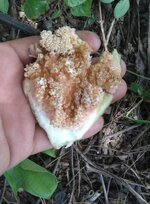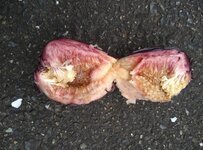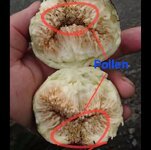Hi Nierund,
When I researched Kurume Koaka and Kurume Benimaru on Japanese fig forums, I found some detailed notes from Mr. Inoue, who originally introduced the Kurume fig series many years ago. He mentioned that Koaka and Benimaru show unstable traits, and there’s a possibility that they belong to either the Smyrna or Caprifig type.
Recently, I had a direct conversation with Mr. Inoue about this topic. He explained that Kurume Koaka is a Common type, while Kurume Benimaru is still unidentified. According to him, about 30% of the fruits that grow on old branches are male and 70% are female, the female ones being edible. He also described that Benimaru has a rather unusual fruiting behavior. When a side bud grows, it initially forms a flower bud, but if left to grow naturally, that flower bud eventually degenerates and disappears. However, if the branch is pruned about 20 cm above the fruit, the new shoot that emerges can produce fruit again. Interestingly, these fruits are a mix of male and female types, just like those on the older branches. The pulp color also differs, light red for fruits from old branches, and nearly colorless or translucent for those on new branches.
Mr. Inoue emphasized that Benimaru is still unstable as a cultivar, meaning its characteristics may change depending on the growing environment. Because of this, he prefers not to have it widely distributed.
When I asked whether he had shared Benimaru with other fig collectors, he mentioned that he had only given it to a few trusted enthusiasts and specifically requested that they not distribute the plants further.
Regarding the ripe Benimaru fruit photo you shared, I believe that’s from S. S, one of the well-known fig growers in Thailand. I think his Benimaru came from a reliable source.
If his Benimaru produced ripe fruit successfully in Thailand, that would mean it’s a Common fig. Because in tropical countries like Thailand, Vietnam, Malaysia, Indonesia, or Singapore, etc. San Pedro and Smyrna figs can’t produce ripe fruit naturally, as we don’t have the fig wasp (Blastophaga psenes) here. So in those climates, only Common figs can ripen properly.



